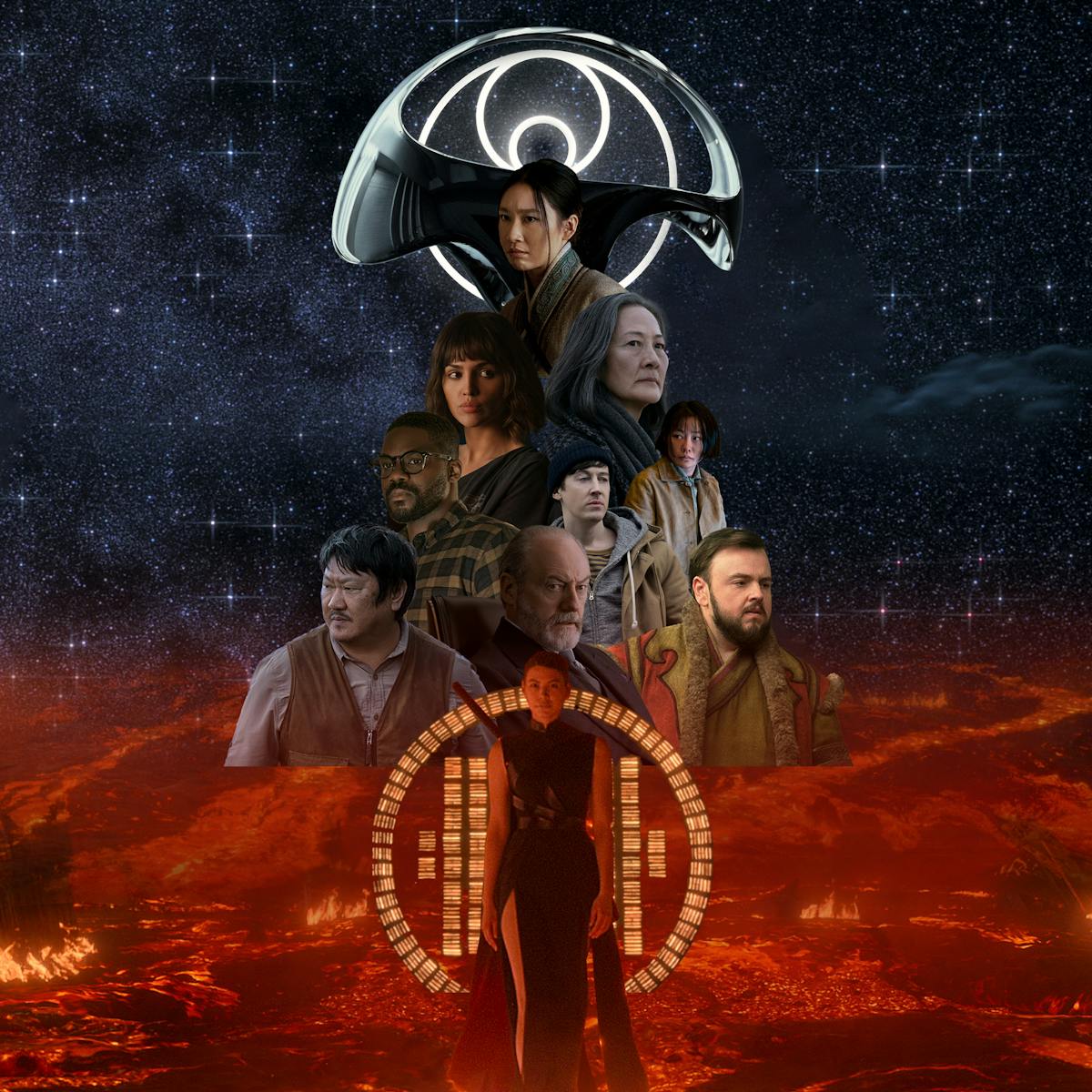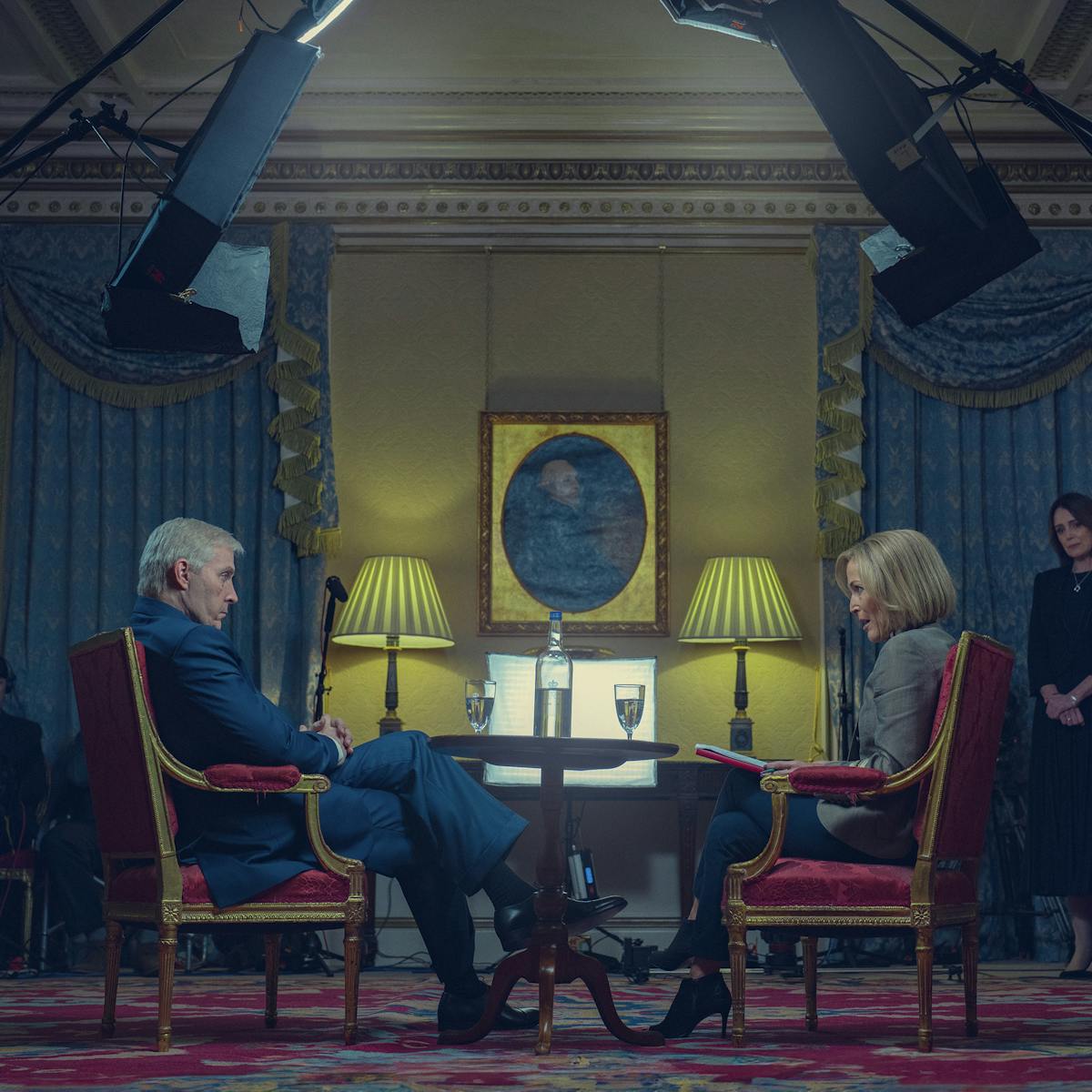With Blue Eye Samurai, Michael Green and Amber Noizumi imagine an epic revenge tale set in ancient Japan.
At first, the creators and showrunners of Blue Eye Samurai, Amber Noizumi and Michael Green, were excited when their newborn daughter, of white and Japanese descent, had blue eyes. But then, Noizumi began questioning her initial reaction. “What’s the big deal about that? And why am I so excited that I have a baby who looks more white?” she wondered. Digging into her heritage, she learned that throughout the Edo period, when Japan was closed off from the Western world, a blue-eyed girl would have been considered an outcast. From there, the husband and wife creators began dreaming up Mizu, a seventeenth-century warrior who seeks revenge on the only four white men in the country — any of whom could be her father.
Drawing inspiration from the high-flying revenge fantasy of Kill Bill, Barbra Streisand’s dramatic love story Yentl, and such classic samurai films as Yojimbo and 13 Assassins, the showrunners imagined an adult animated story in which Mizu, disguised as a man, traverses her homeland, hunting down her targets and making both friends and foes along the way.
Fifteen years later — including four and a half years of production — their series has become a must-watch, character-driven epic, and at the 2024 Annie Awards, Blue Eye Samurai won all six of the awards for which it was nominated. Mizu is voiced by Pen15’s Maya Erskine, who leads a cast of Asian actors, including George Takei, Randall Park, Brenda Song, and Darren Barnet. “Everyone was committed from day one to an all-Asian cast playing Asian characters,” says Green, who wrote the screenplays for Blade Runner 2049 and Logan. “And we were very, very fortunate that almost everyone we asked to be a part of the show said yes. It was really touching.”
Blue Eye Samurai immerses viewers in the gorgeous scenery and culture of Edo Japan, while also creating a cast of characters that feels both true to the period and relatable. From ostracized Mizu to her kind-hearted sidekick Ringo, an expectation-defying noodle cook born without hands, and Akemi, a princess who longs to be free, Blue Eye Samurai takes the best aspects of the historical fiction genre and combines them with thrilling fight scenes and plenty of heart.
Noizumi and Green spoke to Queue about the journey of creating Blue Eye Samurai, their first animated production, and how they brought their vision for Mizu and her world to life.

Mizu (Maya Erskine)
Miranda Tsang: What was the most challenging aspect of building the Blue Eye Samurai world?
Michael Green: Animation is an incredible tool. It is incredibly difficult and takes a long time; it takes more than double the amount of time it would’ve taken to make a live-action version of the same show. We were in continuous production since the onset of quarantine, and it was an amazing run of time, but you have to show up every day with that consistent vision, and be able to communicate it over and over again, and always remember what the original intention was. But the flip side to that is you get to work with incredibly gifted artists who are making your props and speaking your voices and drawing your shots and directing things and painting backgrounds and on and on and on. There are so many disciplines involved in animation, so the production exigencies are both the hardest and most rewarding parts of making the show.
Amber Noizumi: I think we went into it somewhat naïvely thinking that we would have greater control over animation. Oh, we can just draw it. We can see it in our head, and then someone can just draw it. Nobody has to build it the way you have to [build sets]. We didn’t understand that it still does have to be built, and it’s still difficult, and it’s still expensive — it’s just different. There’s a poetry and somewhat of a surrealism that exists in animation that worked for the tone of our show, [such] that we just couldn’t see it in live-action.
Much of the scenery reminded me of animation from the 1950s and 60s when everything was done by hand. What was your vision for the look of the series?
MG: The vision was always to have it have a handcrafted, bespoke feel. And we brought in partners on the show who got excited about that and knew not only how to actualize that, but how to make it even more beautiful than we originally imagined. Just because something is done through a computer, doesn’t mean that it can’t showcase the artist’s hand and have brushstroke qualities to it. So it was really about communicating with our team and just watching their excitement and leaning into it. Everyone wanted that same result, and once we could all see it in our heads, it was just a matter of harnessing the technology to get it there.

Ringo (Masi Oka)
There are so many traditional Japanese practices incorporated into the series, and they never feel overexplained for the audience. Can you talk about how you avoided that trap?
AN: Our goal was always to make it feel endemic to the show. You were entering the world and you had to explore it and figure it out as you go, rather than just being overly didactic and like, “On this episode of Blue Eye Samurai, you’re going to learn about the tea ceremony.”
MG: And it allowed for incidental learning. We wanted an immersive tactile experience. So if you see someone rolling out a dough, by the end of it, you’ll see that becomes noodles. We don’t have to tell you that.
How was the writing process impacted by your historical research?
MG: Research can yield stories, which is why it’s both fun to indulge it and a trap to get too caught up in it. We came across the blackening of the teeth, the Ohaguro sets, and realized that that was high fashion of the time for upper-class women. And we realized that a young woman who had doubts about getting married might find that horrifying, and to a modern lens, it might look a bit frightening as well.
AN: Our artists had a great challenge ahead of them with finding all of the props and sets. The borders were closed at the time, so there isn’t as much that exists in terms of art, or what things looked like, as there is for other periods of time and other places in the world. So our [production designer] Toby Wilson took a deep dive, calling in favors from family members and people who might have a deeper insight or have connections to some Japanese texts that would show it more.
Can you talk a little bit about casting Maya Erskine as Mizu? She’s so good in this, but I wouldn’t have recognized her voice.
AN: Maya is a chameleon of an actor. She comes from Pen15, where she plays the awkward little girl, and now she is this badass samurai hero and she really brings a lot of depth to it. I think she felt moved by Mizu’s story and growing up half-Japanese herself, she brought a lot of personal experience to that.

Akemi (Brenda Song)
“The Tale of the Ronin and the Bride,” is such a fantastic episode of television; it truly stunned me. Can you just talk about how you conceived of its structure?
AN: We really wanted to be able to tell Mizu’s story as an onryō [vengeful spirit]. As you were mentioning before, we didn’t overexplain what things were. We called her an onryō a few times, and this was a great opportunity to learn about her past and fill it in using the structure of a traditional Japanese Bunraku play. And we just found it kind of a compelling way to go deeper into Mizu and who she is and the way that we would know her, not just as a monster. So in [framing] the story of her as, Here’s Mizu as a monster, you actually learn the inverse; you learn to sympathize with her.
What’s surprised you about the show’s reception?
AN: I’ve had so many people who are mixed race, not just Asian and white mixed race, who’ve come up to me and said that they’ve never felt seen like this before in a show. The representation was important to us, but it wasn’t what we thought of when we set out to make the series. But the effect that has had on people has been surprising and heartening.
Your daughter was the inspiration for the series. What do you hope she takes away from it?
MG: She actually voices young Mizu before the character is taken over by Maya Erskine. It was especially heartening to hear her voice in a show that was inspired by her as an infant. As a parent, you often have tiny brushstrokes of things that are meaningful to you, little things, but this felt like the biggest one possible. That’s something that started with an affectionate conversation when she was six months old — Oh wow, our blue eye samurai — then started to become more of a conversation, to then [us] creating a whole show inspired by it, and then it exists.
AN: Having blue eyes, most of her friends don’t believe that she’s Asian until they see me. So I think that it did give her this kind of a feeling of a connection. She’s like, “No, no, it’s me. I’m in the show, the show is inspired by me.”



